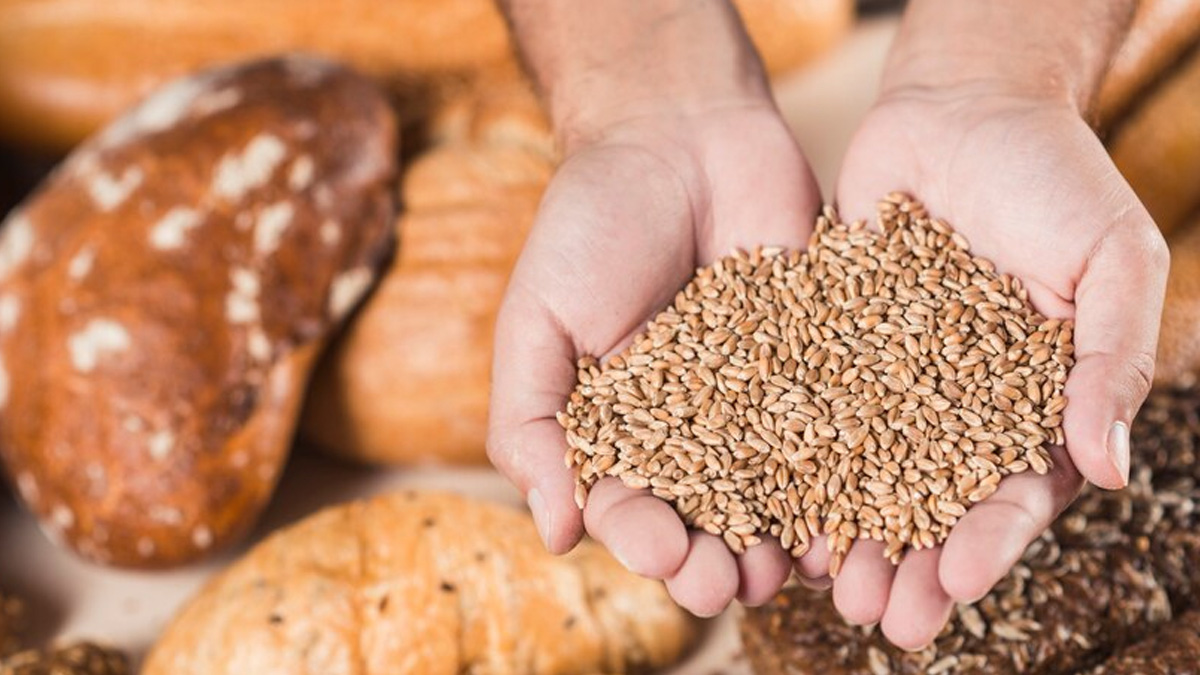
Imagine enjoying your favourite meal, only to have it followed by severe stomach pain and discomfort. For those with celiac disease, this scenario is all too familiar. Celiac disease is an autoimmune disorder where the ingestion of gluten, a protein found in wheat, barley, and rye, leads to damage in the small intestine. This condition affects millions worldwide, yet many remain undiagnosed. Let's understand the causes of celiac disease and explore effective management strategies to help those affected lead healthier, more comfortable lives.
Table of Content:-
To know more about this disease, its causes and how to manage it, OnlyMyHealth interacted with Dr Kiran Dhake, Corporate Wellness Physician, Mumbai.
He explained, “Celiac disease is a condition where the body’s immune apparatus attacks body tissues when gluten is consumed. Medically, it is termed as an autoimmune disorder. It may develop at any age. However, the majority of cases occur in childhood. It affects about 1% of people worldwide.”
The primary site of the disease is the small intestine. Due to disease activity, the amount of nutrients absorbed across the intestine is reduced.
Causes of Celiac disease
There are several causes of developing celiac disease. Dr Dhake explained the causes of it.

1. Disease mechanism
It is an autoimmune disorder where the immune system mistakes healthy cells and their substances for harmful ones and initiates attack ie. the formation of antibodies against them. “In the case of celiac disease. The immune system misinterprets gliadin a component of gluten—as an unfavourable substance and perceives it as a threat to the body,” Dr Dhake said.
As a result of the attack [ antibody formation] and misinterpretation, the surface of the intestine that has tube-shaped projections –known as villi-- becomes red and swollen. This leads to affecting the digestive and absorptive capacity of the intestine---leading to various symptoms.
2. Dietary sources
“Individuals exhibit symptoms immediately after consumption of these cereals. Some individuals may experience symptoms after eating oats. This may be because of the contamination of oats by other grains during production,” Dr Dhake said.
3. Medical disorders
According to Dr Dhake, certain medical conditions can pose an increased risk of developing celiac disease.
- Type I Diabetes mellitus.
- Thyroid disorders—Hashimoto’s thyroiditis.
4. Genetic factors/Family predisposition:
Research literature mentions strong genetic predisposition for celiac disease. It is closely associated with HLA-DQ2 and HLA-DQ8 gene mutations. It is observed to run in families. There is approximately 10 per cent risk with family history.
5. Environmental factors
Dr Dhake explained, “If there is a history of rotavirus infection of the digestive tract in childhood, there is a high probability of developing celiac disease.” adding, “Another contributing factor is, if the baby is not being breastfed when gluten food is introduced into the diet, there might be an increased risk of developing celiac disease.”
Also read: What Is Non-Celiac Gluten Sensitivity? Know Its Causes
Symptoms
Symptoms may vary and can range from mild to severe, and often intermittent.
Certain individuals may not show noticeable symptoms and are often detected during routine testing. Here are some symptoms listed down by Dr Dhake.
1. Digestive symptoms
Diarrhoea: it is one of the common symptoms. This occurs due to the inability of the small intestine to absorb nutrients, malabsorption.

- Malabsorption leads to stools containing abnormally high fat levels giving a frothy appearance and foul smell of stools.
- Other digestive symptoms include
- Tummy ache.
- Bloating and increasing flatulence.
- Vomiting.
- Constipation.
2. Non digestive symptoms

- Fatigue as a result of anaemia due to deficiency of vitamin B12 or folate acid.
- Unexplained weight loss
- Joint ache.
- Headache.
- Itchy blisters.
- Tingling numbness in hands and feet [neuropathy]
- Infertility.
- Issues with speech, coordination, and balance [ataxia]
Diagnosis
Testing should be conducted if the following set of symptoms is observed.

1. Blood Tests: Detection of various antibodies through blood samples can diagnose celiac disease during the majority of instances. --- Elevated levels of anti-endosymal antibodies of IgA type and anti-transglutaminase antibodies are considered a sensitive and specific tool to establish the diagnosis. If these antibodies are negative, anti-DGP antibody levels are recommended.
2. Biopsy: A positive blood test is the criteria for further evaluation by biopsy through endoscopy. A piece is taken out for testing the tissue sample to detect cellular abnormalities.
3.Genetic testing: Testing of HLA- DQ2 and DQ8 genes is also recommended
4. Endoscopic biopsy of the small intestine to check for damage to the villi.
5. Other tests: Complete blood count, Vitamin B12 levels, folate levels, Vitamin D levels, Kidney function test, iron studies, thyroid profile.
6. a doctor may recommend a Dexa scan test if the condition is affecting bones.
Management
1. Gluten withdrawal is one of the effective management ie by excluding foods that contain gluten. Adopting a gluten-free diet is a preventive measure to prevent damage to the intestine.
2. It is recommended to seek an opinion from a nutritionist, not only to identify the sources of gluten but also to ensure a balanced and gut-friendly diet to provide all the nutrients the body needs.
3. According to Dr Dhake, gluten is not essential in diet and it can be replaced by other food –gluten-free versions of various food items.
4. Food unsafe for celiac disease: Wheat, rye, barley, bread, pasta, biscuits, cakes, chips and other processed/packed food items.
6. Food safe for celiac disease: Dairy products—milk, cheese, butter., fruits, vegetables, rice, potatoes, gluten-free flour—rice, corn, soya.
7. Seeking support from local celiac groups or the hospital can guide patients about food management.
Also watch this video
How we keep this article up to date:
We work with experts and keep a close eye on the latest in health and wellness. Whenever there is a new research or helpful information, we update our articles with accurate and useful advice.
Current Version